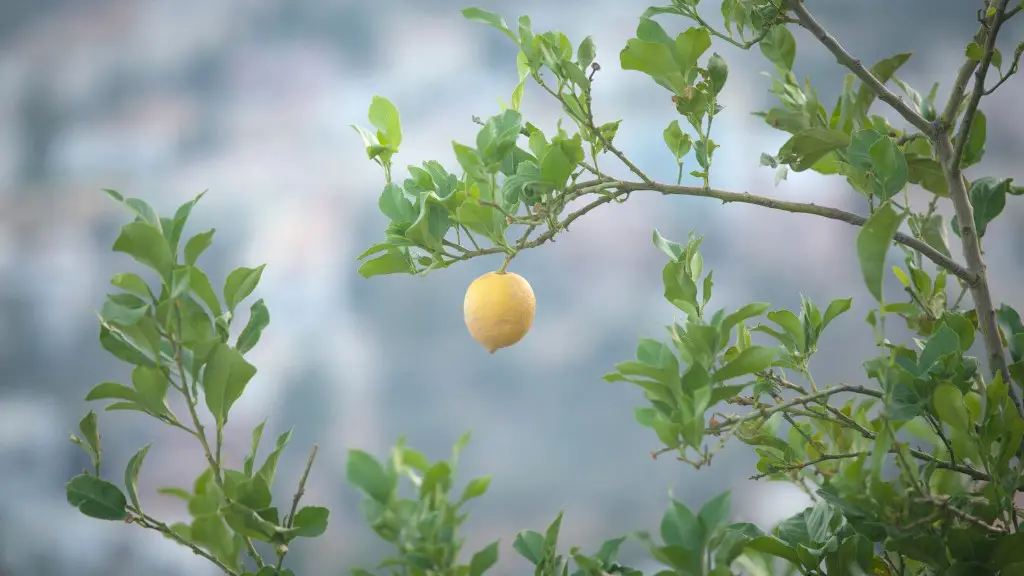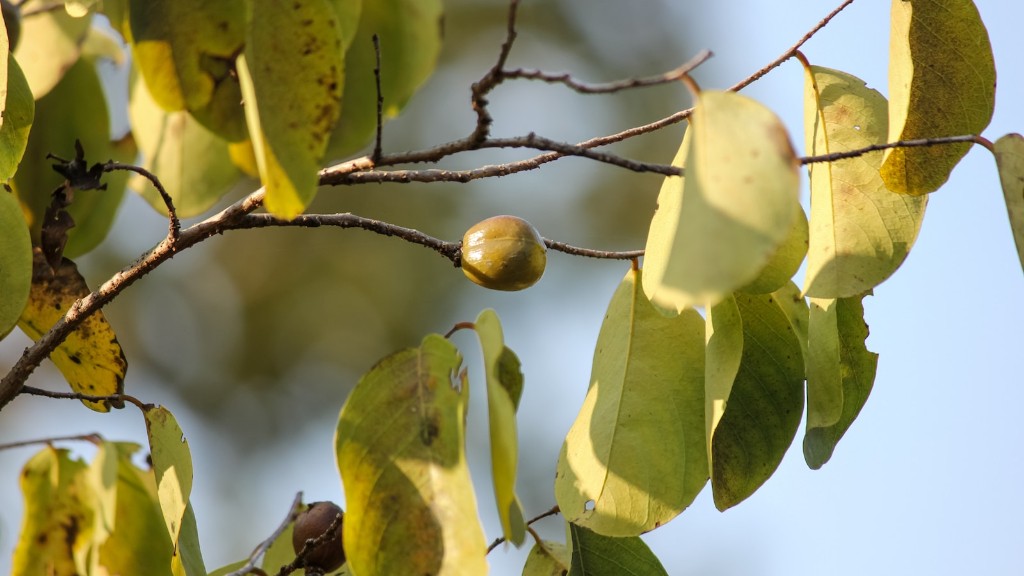When will Lemon Tree Produce Fruit? Lemon trees can be an attractive addition to any yard and they offer an abundant crop of citrus fruit throughout the year. While this can be a great investment, a key question people often have is when their new tree will produce fruit. There are many factors that can influence this timeline, so it is important to understand them in order to best prepare to enjoy an abundance of luscious lemons.
The most important factor in determining when a lemon tree will produce fruit is the type of tree that was purchased. A grafted tree will usually be ready to offer its first crop in 1 to 3 years. A seed-grown tree can take much longer, potentially up to 7 years or more. It is also necessary to pay attention to what type of fruit is listed as the variety of the tree since some varieties are typically slower to bear fruit than others.
The climate of the region will also influence when a lemon tree produces. Trees that live in warmer climates may produce fruit more quickly than those in colder regions. Therefore, it is essential to purchase a variety of tree that is known to do well in one’s region and environment. Additionally, it is wise to look for a tree that has been field grown rather than container grown since those can be slower to produce good fruit.
Additional factors that can influence when a lemon tree produces fruit include the tree’s health, the amount of fertilizer applied, the amount of water provided, and the amount of pruning that is done. Healthy trees that receive plenty of water, fertilizer, and appropriate pruning will typically produce more fruit at a faster rate than trees that are unhealthy, neglected, or stressed. Overall, it is wise to ensure a tree’s health and needs are met in order for it to figure prominently in one’s lemon-harvesting future.
Finally, it is important to remember that the abundant production of a lemon tree takes time and effort. While this can be a challenge, a successful investment in the form of a luscious crop of lemons is worth your while and will last for many years. With the right care and patience, you can look forward to a continuous harvest of juicy lemons each season.
Environmental Factors
Environmental factors affect the production of fruits from lemon trees. The climate of an area can be a major factor dictating the tempo of fruit production. The species of lemon tree plays a part as well. Tree varieties that are adapted to cooler areas tend to mature at a slower rate and offer a lower yield. In these areas, waiting time before harvesting fruit can be extended to up to five years. Furthermore, stress can also play a role in delaying the production of lemons. In colder areas, orchards wrapped in fleece experience higher levels of yield than those that are not. Finally, shades and shelter are an important way to keep the trees safe, in both summer and winter, accelerating their production.
Nutritional conditions should also be taken into account when trying to maximize the production of fruit from lemon trees. Trees should be fertilized in the late winter and early spring months, when their growing season starts. Surprisingly, bee colony attraction is a helpful step in the process, since pollinators are needed for the fertilization of the plants. Alternatively, the manual transfer of pollen from flower to flower can also be performed.
In order to help with pollination, the surrounding area of the lemon trees should be kept free from other sources of different plants, mostly weeds. Despite the fact that weeds compete for resources, their presence may help via the attraction of beneficial insects that act as pollinators. Moreover, weeds can be used as a natural mulch for the orchard to retain the soil’s moisture.
Finally, it should be noted that lemon trees planted with appropriate distances between them are more likely to produce healthy, abundant fruits, due to the competition for resources that would otherwise be unfair. Even though it is recommended to have trees placed 2-3 meters apart from each other, the exact distance of tree spacing may vary according to the variety of lemon tree.
Soil Conditions
Apart from proper environmental conditions, soil conditions can considerably impact the production of lemons when tree planting.
The pH level of the soil is extremely important. Soil pH levels throughout the range of 5.6 and 8 are considered suitable for lemon trees, however lower values are the most convenient. A high level of soil acidity may be achieved by regularly pruning the trees and trimming their roots when necessary. The desired pH of the soil may also be obtained by adding products like additives or fertilizers.
When therefore soil testing is completed and the pH levels are in the desired range, the nutrient levels of the soil should be monitored. Nitrogen, Potassium and Phosphorous, as well as other micronutrients are necessary for the healthy growth of a lemon tree.
The consistency of the soil may also be taken into account when planting and caring for a lemon tree. Nutrient-rich, well-drained soil is an ideal way for a lemon tree to thrive. Additionally, the use of a water-retention agent can help in areas that experience extreme dryness. Last but not least, certain soil diseases and pests should be taken into account, as they may cause permanent damage and slow down production in a lemon tree.
Pruning and Water Maintenance
Lemon trees require pruning from time to time in order to keep their shape and increase fruit production, mostly when young or when an increase in production is desired. Pruning techniques may vary depending on the shape of a particular tree, although mainly thinning and heading back are used. Thinning out should be done in order to reduce the density of branches and allow more sunlight to reach the inner parts of a tree; while heading back helps with the reduction of height and the production of more fruit.
The amount of water used on a lemon tree is another variable that significantly affects the production of fruit. An established tree, such as one that is 5 years old or older, should receive 1-2 inches of water each week, depending on the type of soil and local weather conditions.
When trying to determine the ideal amount of water for a tree, it is important to note the state of the soil and its possible water-holding characteristics. For instance, in the moment when the soil starts to feel dry and the trunk of the tree looks brown, additional irrigation should be provided.
Finally, overwatering can be just as dangerous for a lemon tree as underwatering. It is better for the health of the tree to water deeply and less often, rather than shallow and more frequently. Despite the fact that various irrigation methods can be used, like water sprinklers or drip irrigation, water from a hose will reduce the potential of significant soil compaction.
Harvesting
A lemon tree that is healthy and maintained properly should produce enormous amounts of fruits. As it is the case with any other citrus tree, the fruit of a lemon tree is ready to be harvested when its texture has softened and it begins to change its color to a yellow-green hue.
Harvested lemons should be consumed shortly after harvest, as they do not store well. If a longer shelf life is desired, a few steps can be taken to preserve lemons for a couple of weeks. The fruits should be washed with a brush and stored in sealed plastic bags filled with slightly moistened paper towels. For even better conservancy, the fruits can be placed in a refrigerator, either whole or sliced.
Finally, small to medium-sized lemons can be sorted out and kept for propagation purposes, as long as their seeds are mature and viable. Nevertheless, it is compulsory to clean, fumigate and store the seeds in a material that can keep them moist until it is time for planting.




